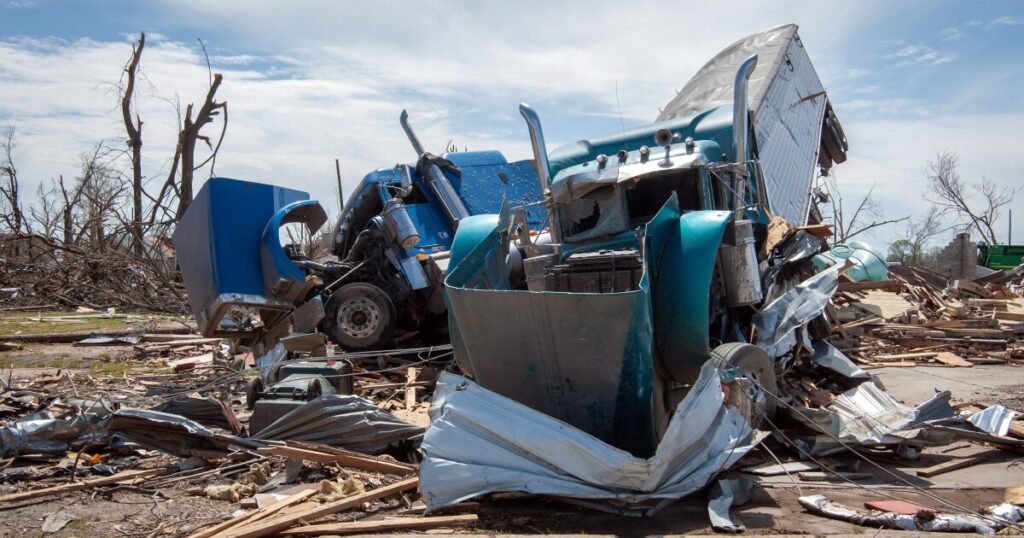Climate losses batter insurers while reinsurers step back

Enjoy complimentary access to top ideas and insights — selected by our editors.
(Bloomberg) –As the planet warms and more natural disasters occur, insurers are facing an increasingly difficult time.
In 2023, for the fourth year in a row, global insured catastrophe losses exceeded $100 billion. The trend continues this year: In the first half, losses have reached $62 billion and are tracking well above the 10-year average of $37 billion, according to a recent analysis by Munich Re.
Ordinarily this shouldn’t trouble primary insurers, which can offset some of that risk by buying reinsurance. But it’s getting harder for them to do so. In a world of climate change, inflation and growing property exposure, reinsurers have ramped up their prices and are demanding more favorable terms, such as raising the level at which a policy will pay out.
And that means primary insurers are left holding the bag.
“Insurers are being forced to take on more risk,” said Charles-Marie Delpuech, an insurance credit analyst at S&P Ratings. “It’s a structural change in the overall market.”
And the numbers show just how much better reinsurers are doing as a result. S&P’s data on the top 19 global reinsurers shows that while their annual share of natural-catastrophe losses had historically been in the 20% range, it fell sharply in the last three years, sliding to about 10% in 2023.
The key reason is the reinsurance industry has become more averse to backstopping “secondary perils,” which are smaller but more frequent extreme weather events such as tornadoes, thunderstorms, fires and floods. These localized events are harder for the insurance industry to model and manage, partly because they’re driven by climate change.
They’re also responsible for a rising share of insured losses. Severe convective storms alone accounted for about $70 billion of insured losses globally last year, according to an estimate by insurance broker Aon Plc. That’s equivalent to 59% of losses from all natural disasters.
Reinsurers were hurt by secondary-peril losses in 2021 and 2022, but they have since trimmed their exposure, Delpuech said.
By 2023, “a large portion of the losses fell mainly on primary insurers,” particularly in the US where most severe convective storms occur, according to S&P. Conversely, reinsurance losses were “well within their budgeted natural-catastrophe load.”
Delpuech points out that even if a once-in-a-100-year natural catastrophe were to occur, causing more than $250 billion in annual industry losses, most reinsurers would still be shielded.
“We calculate that the sector, as a whole, would still be capitalized above the 99.99% confidence level after such an event,” S&P said.
The upshot is that reinsurers appear to be in a particularly strong position to ride out both primary perils, like a large hurricane, and secondary perils, to which they have less exposure.
Now that reinsurers feel they have found their footing, they’ve become emboldened to expand operations—but on their own terms. This means higher prices and tougher clauses for when a policy will be triggered.
Moody’s Ratings says it has turned more bullish on reinsurers. On Tuesday the firm raised its outlook for the global reinsurance sector to “positive” from “stable,” citing several factors, including higher premiums, tougher policy conditions and lower exposure to secondary perils.
Based on January renewals, the 19 top reinsurers increased their average overall risk exposure to natural catastrophes by 14%, according to S&P. Their combined budget for absorbing “nat-cat” losses also jumped to about $19.2 billion in 2024 from $17.1 billion in 2023 and $15.5 billion in 2022.
The expectation is that global reinsurers will deploy more capital over the next two years, S&P said. The industry earned its cost of capital in 2023 for the first time in four years, and it will likely do so again in 2024 and 2025, “solidifying our stable view of the sector.”
Sustainable finance in brief
One of the most contentious investing strategies on Wall Street might be a lot less beleaguered right now if its defenders had shown a bit more moderation at the start. So says Kyle Bass, the hedge fund veteran and founder of Hayman Capital Management. Bass argues that the Republican backlash that’s been building against environmental, social and governance investing in recent years is largely due to demands that fossil fuels be abandoned immediately, as opposed to gradually. “Energy transitions take 40 or 50 years,” Bass said. There are people who “think we can just turn hydrocarbons off and turn on alternative power.”
Republican state treasurers aren’t happy Business Roundtable put serving employees on the same level as serving shareholders.Catastrophe bond giant Fermat Capital Management says anxiety about hurricane season has already left a meaningful dent in returns.Pork and beef producers in developed markets are becoming more vulnerable to credit downgrades triggered by climate-related risks.
To contact the author of this story:
Gautam Naik in London at gnaik8@bloomberg.net







